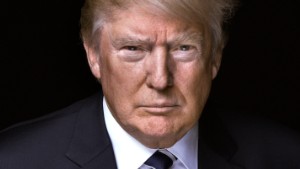In just one year, US President Donald Trump has changed the way Asia looks at the United States.
The cornerstones of American power in Asia, Japan, Australia and South Korea, all lost a little faith in their longtime close ally and protector in 2017, according to Gallup polling.
No military assets have been withdrawn, no embassies closed, but the lack of interest expressed by a US administration focused on “America First” has deeply shaken its status in the region.
“Nowadays when we attend international conferences (around Asia), nobody really talks about the United States anymore … it’s a little bit strange,” Chisuke Masuo, associate professor at Kyushu University’s Graduate School of Social and Cultural Studies, told CNN.
Uncertainty about America’s commitment to the region has prompted local leaders to strengthen ties with each other, to prepare for the day when the US no longer has their backs.
Meanwhile, a number of simmering flashpoints across the region could test the US’ commitment to its allies, and Masuo said China is likely to use those points of tension to prove its regional supremacy.
“It’s the 100th anniversary of the Chinese Communist Party in July 2021, and I think (Chinese President) Xi Jinping will love to demonstrate his people that China has become a dominant power in Asia by then,” she said.
“The US may want to change its Asia policy after three years, but I’m very worried if that will be possible,” Masuo added. “China is restructuring the entire international order in the Asia Pacific.”
Southeast Asia: The forgotten flashpoint
Nowhere in Southeast Asia is the power struggle between the United States and China as clear as in the fight for control of the South China Sea.
It’s a regional flashpoint which has long threatened to spark a larger armed conflict amid territorial claims from at least five separate countries for a small collection of reefs and submerged islands.
Since Trump was sworn into office, tensions have faded as Washington and Beijing’s attention turned north to the Korean Peninsula, Ian Storey, senior fellow at the ISEAS Yusof Ishak Institute, told CNN.
“But if history is anything to go by, it means tensions will start to rise again,” he said.
China has not stopped expanding its footprint in the South China Sea during the North Korea crisis, continuing to extend its hold over the area through bases for aircraft and radar installations.
Storey said over the next three years there are several lines China could cross which would likely provoke a fierce reaction from the United States and other Southeast Asian nations.
For instance, it could declare an air defense zone over the Spratley Islands, as it did in the East China Sea, or Chinese forces could begin reclamation of Scarborough Shoal.





